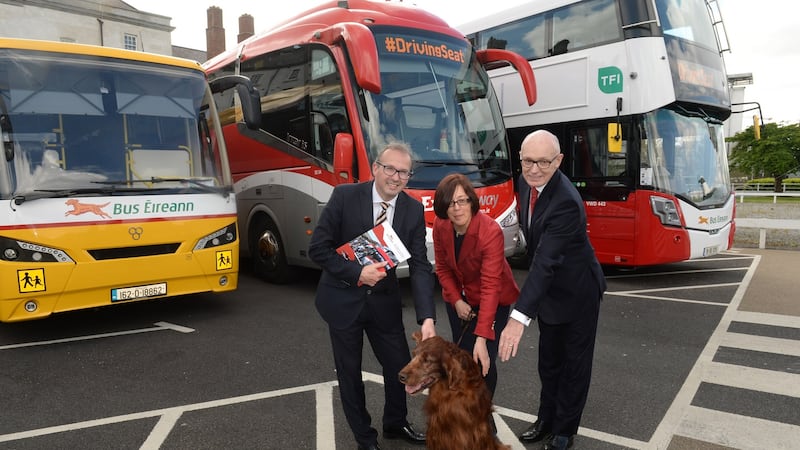Passenger numbers at Bus Éireann rose to their highest in more than 10 years, as the Republic’s largest public transport operator saw growth of 20 per cent in numbers across some cities.
The group reported a €1.6 million operating profit, although on the back of a series of exceptional items the annual deficit stood at €6.3 million.
More positive for the company’s management was the growth in revenue after a number of years in which costs were cut. Revenues rose almost 10 per cent to €390 million in the year ended December 31st, 2018.

The Expressway service, which competes with a series of private-sector operators, turned a profit last year and will be the focus of improving the company's position. Chief executive Stephen Kent said investment in the fleet and technology for that service would be crucial to ensuring its longer-term competitiveness.
Additionally, he said the company was trying to find money to “invest in our people”, who haven’t received pay rises since 2008. Workers in Bus Éireann are due to ballot on a Labour Court recommendation as the company seeks to “rebuild trust” among staff.
While the deficit was still significant, underlying the company’s heavy reliance on State funding, it had dropped 73 per cent from the €23.6 million reported in 2017. The operator carried 83.6 million passengers last year, including some 120,000 school students per week, with more than 13 per cent growth in regional cities including Cork, Galway, Limerick and Waterford.
Although Bus Éireann does not pay a dividend to the State, through taxation it contributed €58.1 million to the exchequer in 2018. Asked about the prospects of a State dividend, Mr Kent said: “That’s what we want to do.” The company still has to address its longer-term sustainability, he added.
Recruitment campaign
The bus operator is also ramping up its recruitment drive. A recent driver campaign received 2,000 applications and resulted in 250 new drivers joining Bus Éireann, while driver recruitment remains ongoing in many locations around the country. Bus Éireann said it took on 22 apprentices last year, “ the single biggest intake of apprentices in the company’s history, which included the first female apprentice in heavy vehicle mechanics”.
Bus Éireann said 102 new buses will be introduced countrywide in 2019, with double deckers introduced in Cork city, Galway and Limerick. Low-floor accessible buses will be introduced in the west, in Clare, Galway, Mayo, Sligo and parts of Donegal, while Sligo, Athlone, Dundalk, Drogheda, Navan and Balbriggan will all receive accessible new buses for the town services.
The new fleet of buses will all offer onboard wifi, as well as individual USB charging points at each seat.
“This investment of close to €35 million will support the company in its aim to achieve a fully accessible and environmentally sustainable fleet,” Bus Éireann said. Currently, 86 per cent of its buses are accessible, and the figure rises to 100 per cent in regional cities and towns.















